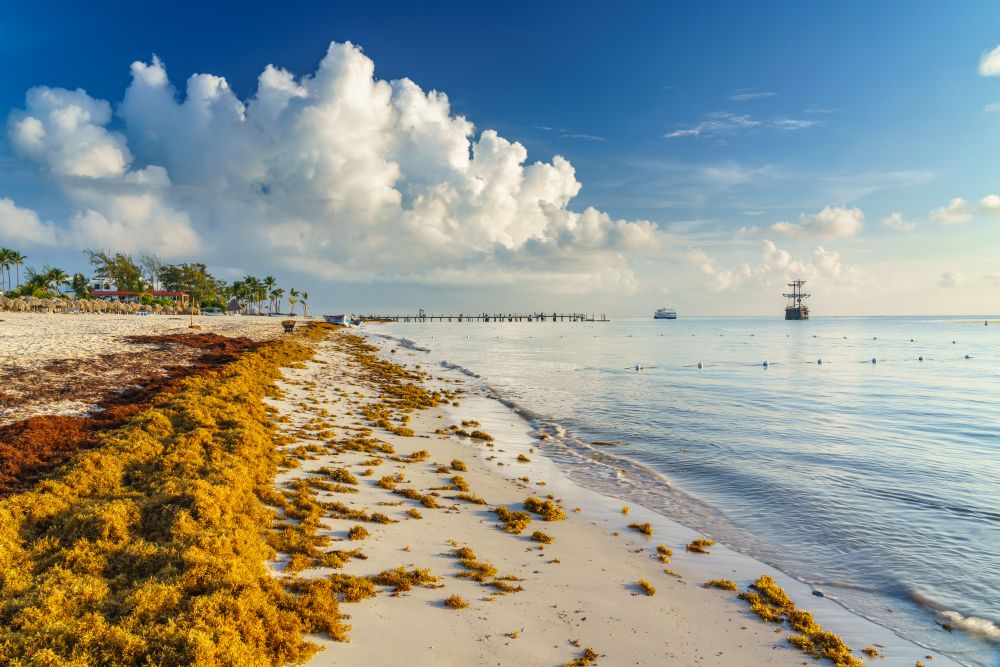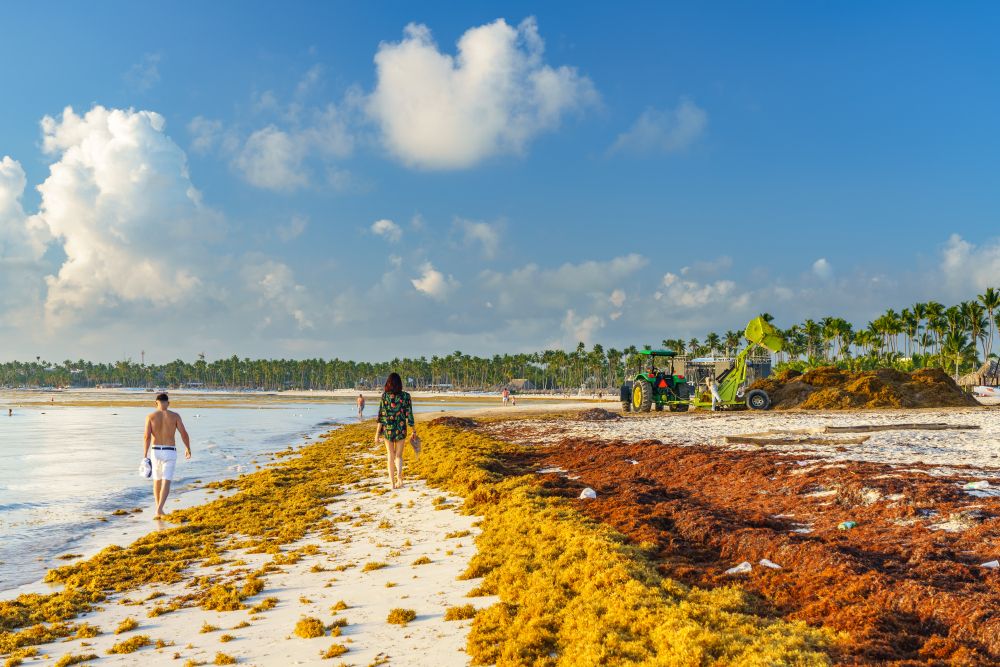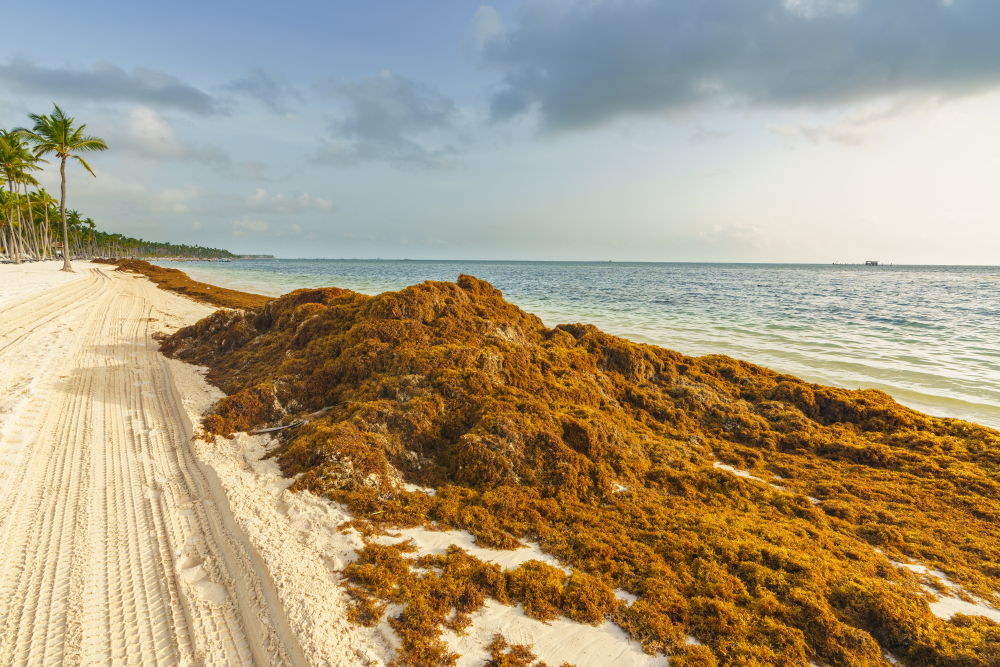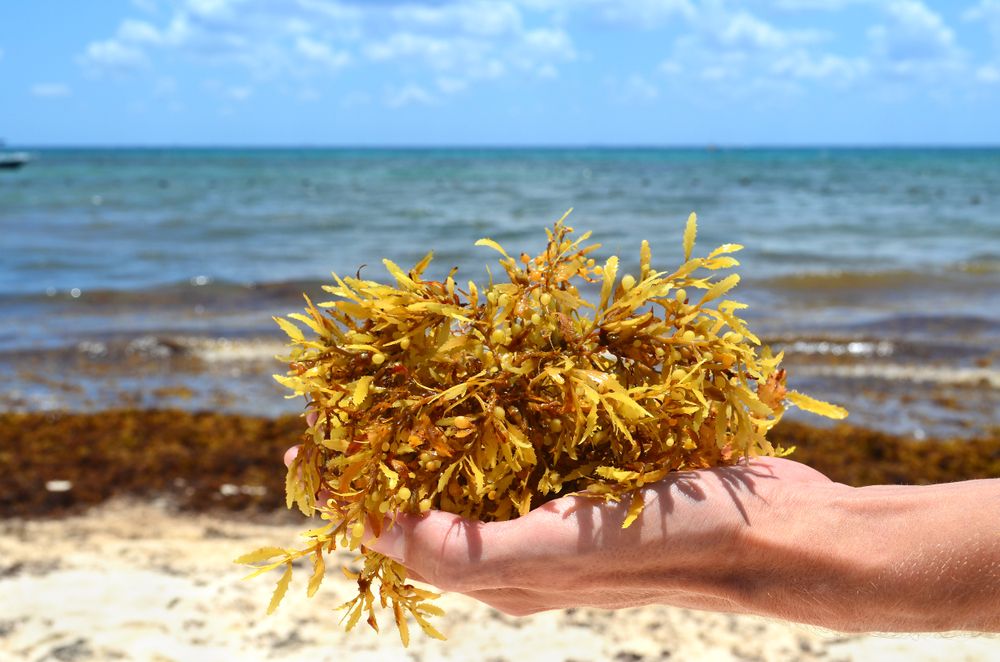The Sargasso Sea in the North Atlantic Ocean, near the Caribbean, is unlike any other sea in this planet. The boundaries of the sea are defined not by landmasses, but by four currents that swirl clockwise around the Bermuda forming a vast whirlpool called the North Atlantic gyre. The Sargasso Sea is part of this gyre. These ocean currents bring marine plants and debris from far away and deposit them into the gyre, yet the ocean water in the Sargasso Sea has a deep blue color and exceptional clarity. But the most defining characteristic of the Sargasso Sea is the presence of a seaweed called sargassum, that exist in large floating mats hundreds, and sometimes thousands of kilometers long. The Sargasso Sea got its name from this weed.

Sargassum seaweed. Image credit: Oliver S/Shutterstock.com
The Sargasso Sea was named by Portuguese sailors in the early 15th century, but the sea may have been known to earlier mariners, as a poem by the late 4th-century author Rufus Festus Avienus describes a portion of the Atlantic as being covered with seaweed. Generally brown or dark green in color, this free-floating weed has berrylike gas-filled bladders that help the fronds to float. These bladders reminded early explorers of a grape they called sargazo, from which came the name.
The sargassum drift around the open ocean wherever the current takes them, sheltering an amazing variety of marine species in their matted roots and stalks, such as young Loggerhead sea turtles who use the sargassum as cover from predators. According to one study, 122 different species of fish, as well as hatchling sea turtles, nudibranchs, seahorses, crabs, shrimps, and snails take shelter in the weed mats. The seaweed in turn is nourished by the excrement of these organisms.
Despite being found exclusively in the Sargasso Sea, the sargassum originates elsewhere—in the nutrient-rich zones close to the coast of the Americas, particularly in the Gulf of Mexico. The currents then carry it around the Florida Peninsula and eventually it ends up in the Sargasso Sea. Sargassum is also the only seaweed in the world that don’t begin life on the seafloor.
Early explorers regarded the Sargasso Sea with fear because they thought their ships would get stuck in the weed. When Christopher Columbus’s Santa María sailed to the Canary Island through the Sargasso Sea, he noted in the ship’s log that the weed was “so thick that it actually held back the ships.” Areas of the sea also overlaps the mythic Bermuda Triangle, and there have been stories of ships getting stuck in the sea for years. But its not the weed that causes ships to suddenly stop moving in the Sargasso Sea. It’s the wind, or the lack of it.
Sargasso Sea falls within what is known as the “horse latitudes”. This region is characterized by calm winds, foggy nights, and hazy days. Sailing ships often become becalmed mid-ocean in this latitude, severely prolonging the voyage and dwindling supplies to the point that it becomes impossible for the crew to keep the horses alive. The dead or the dying animals are then thrown overboard. This is but only a theory. The actual origin of the term “horse latitudes” is debatable.
In the past decade, the sargassum in the Sargasso Sea has been prolificating rapidly. Large mats of the seaweed now stretches across the North Atlantic, some eight thousand kilometers long. Scientist call it “The Great Atlantic Sargassum Belt”. Sargassum now regularly wash ashore on beaches of the tropical Atlantic, the Caribbean Sea and the Gulf of Mexico in vast quantities, where they rot and emit foul smell. Experts say that increasing levels of nutrients that are being flushed into ocean via the Amazon in the spring and summer each year, as a result of human activities including deforestation and fertilizer use, have resulted in the growth.

A beach in Bavaro, Punta Cana, in Dominican Republic invaded by sargassum seaweed. Image credit: S.Borisov/Shutterstock.com

A beach in Bavaro, Punta Cana, in Dominican Republic invaded by sargassum seaweed. Image credit: S.Borisov/Shutterstock.com

A beach in Bavaro, Punta Cana, in Dominican Republic invaded by sargassum seaweed. Image credit: S.Borisov/Shutterstock.com

A beach in Bavaro, Punta Cana, in Dominican Republic invaded by sargassum seaweed. Image credit: S.Borisov/Shutterstock.com

Image credit: mlstudiodesign/Shutterstock.com




Comments
Post a Comment